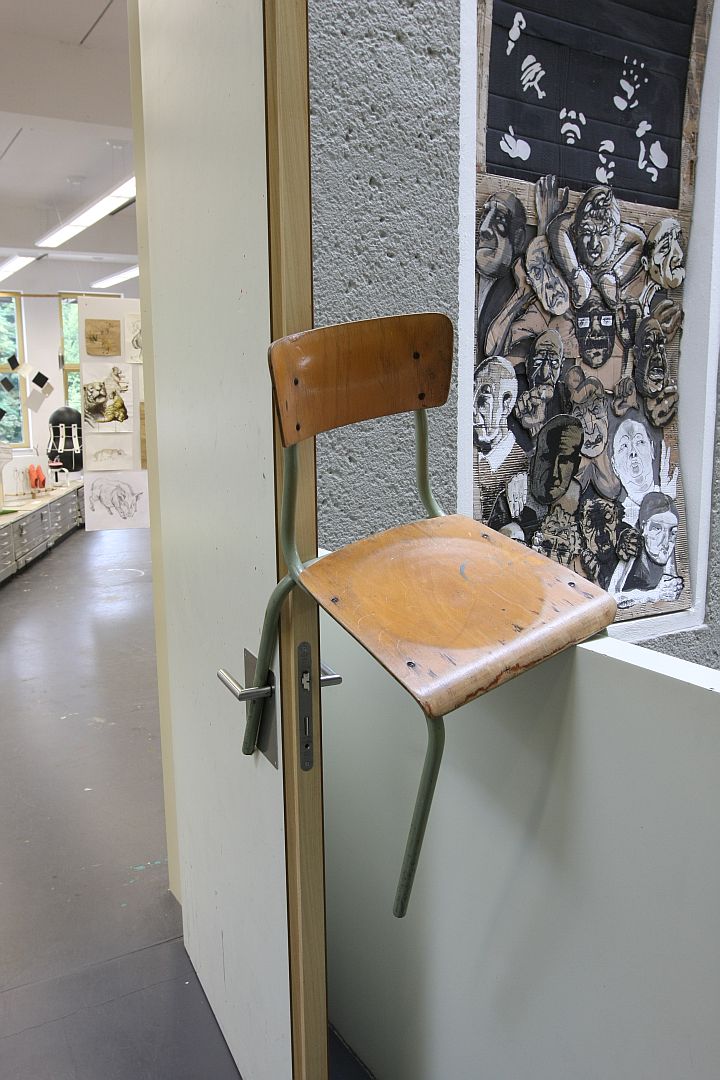As any fool know, Germany's most important contribution to art, architecture and design education was established in Weimar in April 1919.
However, some three and half years before Walter Gropius welcomed the first students to his Bauhaus college, a further Germanic education institution was established, an institution which just as with Bauhaus took a new, modern, progressive, approach to art, design and architecture education yet an institution which in comparison to Bauhaus is still teaching, still researching, still pushing boundaries and still producing talented designers and artists, rather than just memories of what was.
Burg Giebichenstein Kunsthochschule Halle emerged from the town's Gewerbliche Zeichen und Handwerkerschule - Commercial Drafting and Trades School - and owes its transformation to the appointment of architect Paul Thiersch as Director on July 1st 1915.
The scion of a prominent architecture and artistic dynasty Paul Thiersch was born in Munich in 1879 and following completion of his studies in Basel and Munich took up positions as office manager with first Peter Behrens in Düsseldorf and subsequently Bruno Paul in Berlin, thus bringing him into contact with two of the most influential architects of the period and two of the guiding lights behind the German Arts and Crafts movement.
A member of the Deutscher Werkbund Paul Thiersch transformed the teaching in Halle according to the progressive principles of the Werkbund and for all the association's focus on finding a harmonic relationship between modern industrial production and traditional craft trades. Moving craft and art education on from its hitherto genre specific basis, Thiersch introduced a multi-facted, all encompassing teaching programme featuring courses as diverse as painting, sculpture, architecture, textiles, photography, ceramics, book design and dance. At that time a genuinely revolutionary approach to design, art and architecture education and one that was recognised in 1927 when a group of Burg Giebichenstein students under the leadership of Paul Thiersch were invited by Mies van der Rohe to create the interior of one of Peter Behrens' flats at the Weissenhofsiedlung exhibition in Stuttgart.
As with any 100 year old institution based in the north eastern quarter of Germany, Burg Giebichenstein's history is one of dictatorship upon dictatorship: Under the Nazi regime many of the school's most prominent teaching staff were forced to leave and the education programme was placed largely under state control. Under the DDR regime many of the school's most prominent teaching staff were forced to leave and the education programme was placed largely under state control.
Despite such restrictions Burg Giebichenstein has continually managed to retain its reputation for excellent teaching staff, challenging courses and for producing high quality graduates, and as we recently noted currently counts, at least for us, amongst the more interesting design schools in Germany.
The first event in Burg Giebichenstein's centenary celebrations is and was the exhibition "The Power of Making" which runs until February 1st at the Wasserschloß Klaffenbach in Chemnitz, and over the coming twelve months an extensive programme of events is planned starting with an exhibition of the best 100 Burg Giebichenstein posters at the institution's own gallery in Halle and continuing over, for example, explorations of the development of book design, textile design and ceramics at Burg Giebichenstein, a series of symposia and, and perhaps most fascinating, an exhibition featuring works by the plethora of architects, artists, designers, weavers, potters, et al who have served as Burg Giebichenstein Professors over the past 100 years.
Full details will, eventually, be available at http://100.burg-halle.de
